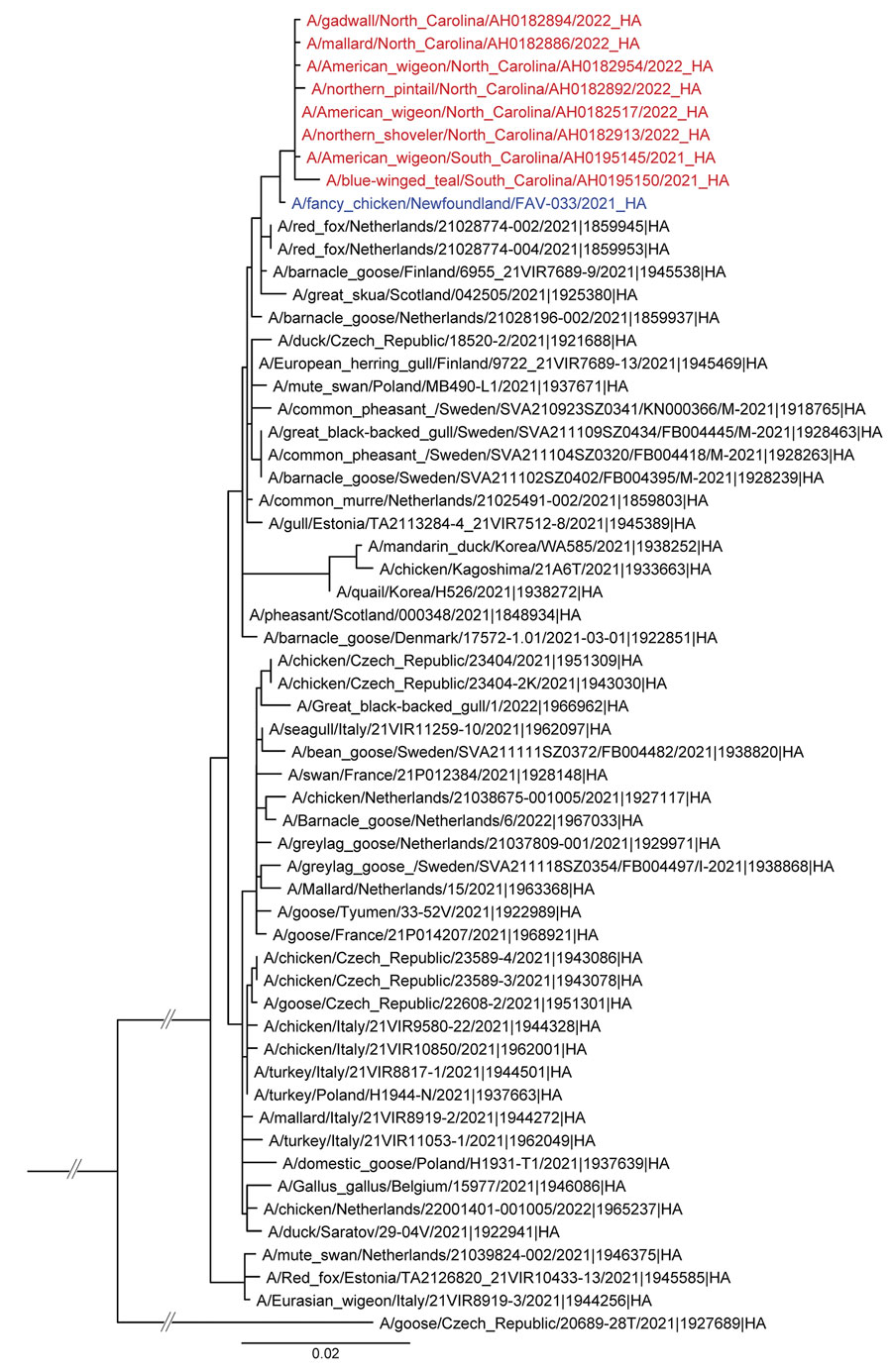Volume 28, Number 5—May 2022
Dispatch
Intercontinental Movement of Highly Pathogenic Avian Influenza A(H5N1) Clade 2.3.4.4 Virus to the United States, 2021
Figure 1

Figure 1. Maximum-likelihood phylogenic analysis of the hemagglutinin gene segment of the first sequenced set of wild bird isolates of highly pathogenic avian influenza A(H5N1) clade 2.3.4.4 virus, United States, 2021. Red indicates US wild bird highly pathogenic detections, and blue indicates closest virus detected in Newfoundland, Canada. MAFFT alignment and RAxML trees were generated in Geneious 11.1.5 (https://www.geneious.com) and visualized in FigTree 1.4.1 (https://tree.bio.ed.ac.uk). Scale bar indicates average nucleotide substitutions per site.
1These authors contributed equally to this article.
Page created: March 10, 2022
Page updated: April 19, 2022
Page reviewed: April 19, 2022
The conclusions, findings, and opinions expressed by authors contributing to this journal do not necessarily reflect the official position of the U.S. Department of Health and Human Services, the Public Health Service, the Centers for Disease Control and Prevention, or the authors' affiliated institutions. Use of trade names is for identification only and does not imply endorsement by any of the groups named above.